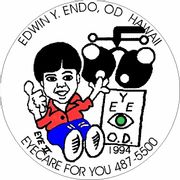
![]() Computer and Digital Device Eyestrain & What you can do about it!
Computer and Digital Device Eyestrain & What you can do about it!
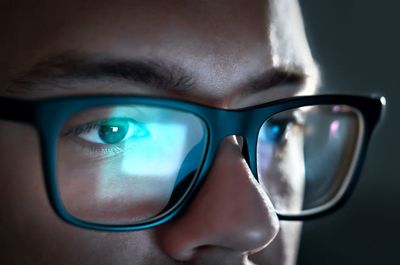
Computers and digital devices make our lives more organized and easier, but can cause eyestrain including ocular and physiological effects. Computer vision syndrome and digital eye strain, with ever-changing technology, long-term effects of smartphones and hand-held digital devices can cause enhanced eyestrain, sleeping disorders (circadian rhythm disruption), change in behavior, etc.
OCULAR AND VISUAL EFFECTS
The short-term use of smartphones and hand-held devices is associated with ocular surface, visual and aesthenopic symptoms:
- Ocular surface. Numerous studies show the use of digital devices alters blink patterns, ocular surface homeostasis and, particularly, tear film instability and oxidative markers and leads to symptoms of dry eye disease, particularly sore eyes, burning, stinging, itch and irritation.
- Visual. Close viewing distance or uncorrected refractive error are likely to cause accommodative and vergence-related stress, leading to symptoms of blurred vision, difficulty in focusing at different viewing distances and ache and strain in the head, particularly behind the eyes. Aesthenopia. Usually characterized by discomfort, dimness of vision and headache, aesthenopia is caused by overuse of the visual organs, dysfunction of the ocular muscles and incorrect refraction. Studies show that even in healthy adolescents, two-hour use of smartphones caused a twofold increase in ocular and visual discomfort. Even one hour of tablet or smartphone use was related to a fivefold increase in visual strain and blur.
NON-OCULAR EFFECTS
Use of computer and digital screens force positions of the body and visual gaze that can cause non-ocular side effects. These side effects:
- Head and neck pain. Computer users frequently have an upward gaze, whereas smartphone and tablet users may adopt a straight-ahead or a downward gaze.
- Sleep troubles. The use of digital devices has been implicated in the disruption of the circadian rhythm, particularly in the secretion of melatonin, which controls sleep.
AMELIORATION OF SYMPTOMS
Any management option(s) for digital eye strain should start with a comprehensive eye examination. A person who has residual refractive error, accommodative or vergence dysfunction or who is predisposed to ocular surface disease (for example, a patient using antihistamines) is likely to have exaggerated issues with the use of digital devices and will need care. Recommendations to quell the symptoms of digital eye strain:
- Acuity reserve. Utilizing larger prints or font size will help to decrease symptoms related to digital eye strain.
- Proper visual hygiene including correct working distance. There is no set distance that will work for everyone, but a combination of an increase in font size, along with an increased viewing distance will help. Proper visual angle, distance to monitor, frequent breaks, blinking frequently, proper hydration, sufficient sleep, optimum visual prescription, proper posture are all important (see diagram.)
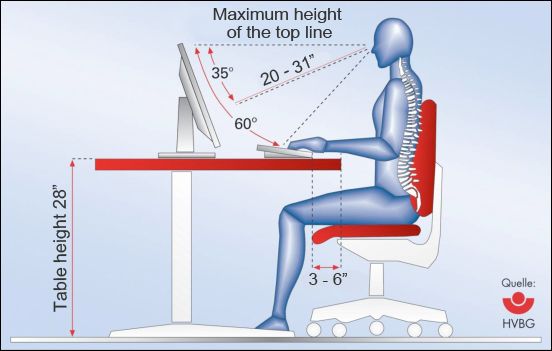
- Lighting levels. We recommend glare-free and adequate or more light and the use of anti-reflection coating can provide some relief to their symptoms.
- Blue-blocking lenses. Several studies did not find strong evidence to support the use of blue-locking lenses as a treatment for DES, while other studies have found blue-blocking lenses may offer visual and health benefits. We suggest a more holistic view will have to be taken to develop better visual and ocular hygiene to help decrease DES includes taking frequent breaks, maintaining better posture and working distance and a discussion of blue blockers.
- Eye nutritional supplements. Higher doses of macular carotenoids led to improvement in macular pigment optical density and overall sleep quality, headache frequency, eye strain, eye fatigue and all visual performance measures in healthy adults who had >6 hour of screen time/day. Supplements of carotenoid and anthocyanins could yield an overall decrease in systemic stress and the alleviation of symptoms, due to digital eye strain.
- Medications including restasis, xiidra, cequa for dry eyes with cloudy vision, and bepreve, lumify, lastacaft for red, itchy and swollen eyes.
- Computer glasses (single or multifocal) or stress relieving lenses (special reading glasses) are very helpful and will allow for extra prolonged reading with reduced eyestrain.
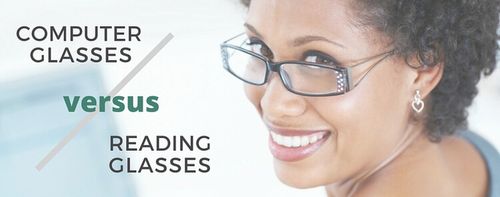
- Multifocal Contact lenses can also benefit anyone and now comes with blue light protection, UV and transitions.
- Gaming lenses like Gunnar can provide enhanced visual comfort while playing computer games which combines a yellow tint with additional stress relieving prescription.
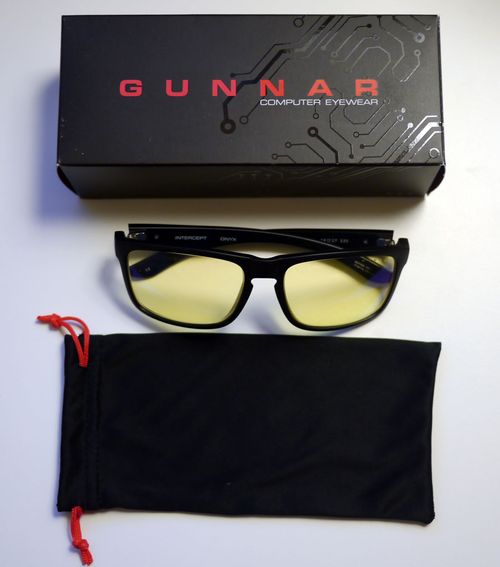
If you are suffering from eyestrain, cloudy vision, dry and red eyes, puffy eyes and need necessary relief, please come in for a thorough eye/vision evaluation and we will be able to help you at Edwin Y. Endo, OD & Associates and Interns.
About the Business
Have a question? Ask the experts!
Send your question

